Link
TRIS VONNA-MICHELL
Through fast-paced spoken word live performances and audio recordings Vonna-Michell (born Southend, 1982) tells circuitous and multilayered stories. Accompanied by a ‘visual script’ of slide projections, photocopies and other ephemera, his works are characterised by fragments of information, detours and dead ends.
0 notes
Video
vimeo
PATRICIA ESQUIVIAS, Generalisimo/Castellana
Patricia Esquivias’s video 111-119 Generalisimo/Castellana (2012), revolves around a specific apartment block in Madrid that dates from the late 1950s which has decorative tiles on its façade and balconies, featuring a different pattern for each apartment. In this new work, Esquivias reads the building like a book; working out what happened in this specific building. She imagines situations which she hopes actually took place, weaving them into the images of the building – but usually the reality that she finds does not match her fantasies.
Patricia Esquivias (b.1979) is a Venezuelan artist based in Madrid. Recent solo exhibitions and projects include Hammer Projects, Hammer Museum, Los Angeles (2011); ‘Todo lo que no es ración, es agio’, Museo Nacional Centro de Arte Reina Sofía, Madrid and ‘Reads like the Paper, 2005-2009’, Midway Center for Contemporary Art, Minneapolis (both 2009). Group exhibitions include: ‘Stories in Between’, Stiftelsen 314, Bergen; ‘LifeStories’, Museum of Contemporary Art, Detroit, (both 2011); ‘Les Faux Amis’, Galerie Nationale du Jeu de Paume, Paris (2010); and ‘Younger than Jesus’, New Museum, New York (2009).
0 notes
Video
vimeo
OLIVER LARIC, VERSIONS, 2010
Oliver Laric’s ongoing Versions (2009-2012) reflects the conditions of our digital world: how original and copy, thing and thought, event and document, are collapsed in a flattened information space where everything is a click away from everything else. Laric’s sculptural and online-based practice—including the website VVork—addresses how information networks afford new logical, epistemic, and affective patterns of experience and understanding. Described by the artist as “a series of sculptures, airbrushed images of missiles, a talk, a PDF, a song, a novel, a recipe, a play, a dance routine, a feature film and merchandise,” Versions confronts the mutability and variation of images.
0 notes
Photo

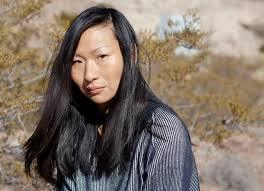
LISA TAN, WAVES
2014
HD video with sound
19 min
https://vimeo.com/118850126
0 notes
Photo
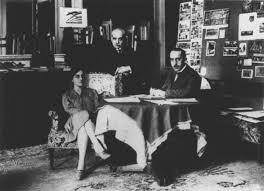
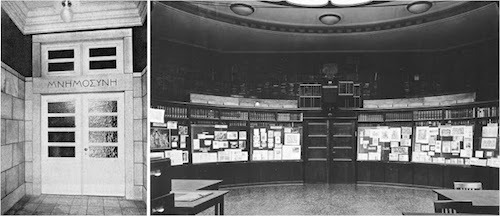
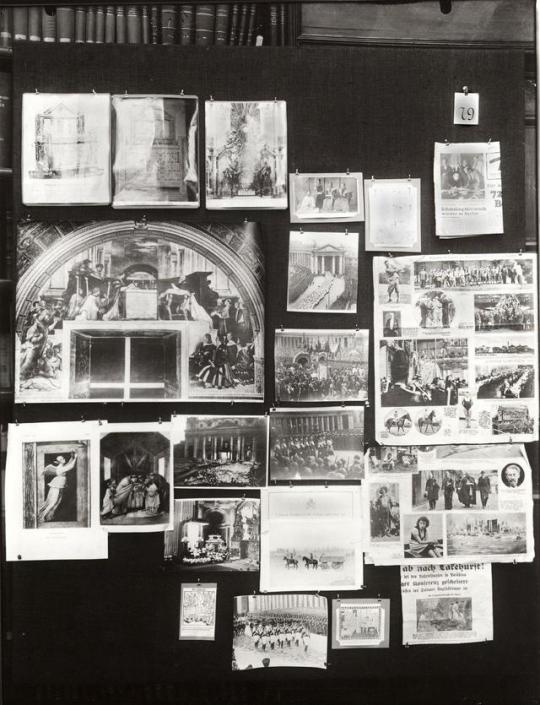


MNEMOSYNE ATLAS
«Mnemosyne-Atlas»
Warburg entitled the series «Mnemosyne, A Picture Series Examining the Function of Preconditioned Antiquity-Related Expressive Values for the Presentation of Eventful Life in the Art of the European Renaissance». The atlas is fundamentally the attempt to combine the philosophical with the image-historical approach. Attached on wooden boards covered with black cloth are photographs of images, reproductions from books, and visual materials from newspapers and/or daily life, which Warburg arranges in such a way that they illustrate one or several thematic areas. Only the boards of the picture atlas have survived as photographed ensembles. Throughout the years since 1924, Warburg’s picture collection of circa 2,000 reproductions generated other configurations fixed and photographed on boards. In addition, specific themes were reconfigured for individual exhibitions or lectures. The last existing series originally consisted of 63 tableaus.
Today, Warburg’s working style would be categorized as researching ‹visual clusters›. Only these are not ordered according to visual similarity, evident in the sense of an iconographic history of style; but rather through relationships caused by an ‹affinity for one another› and the principle of ‹good company,› which let themselves be reconstructed through the study of texts (as for example, contract conditions or biological associations).
0 notes
Photo
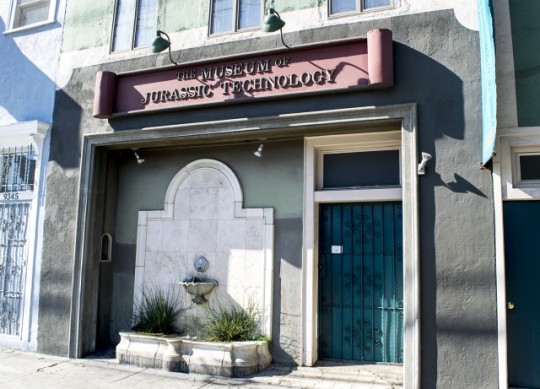



MUSEUM OF JURASSIC TECHNOLOGY
The Museum of Jurassic Technology is a museum located at 9341 Venice Boulevard in the Palms district of Los Angeles, California. It was founded by David Hildebrand Wilson and Diana Drake Wilson (husband and wife) in 1988.
Some exhibits seem to have been created by Wilson's imagination while other exhibits might be suitable for display in a natural history museum. The Museum of Jurassic Technology at its heart, according to Wilson, is "a museum interested in presenting phenomena that other natural history museums are unwilling to present.
0 notes
Photo

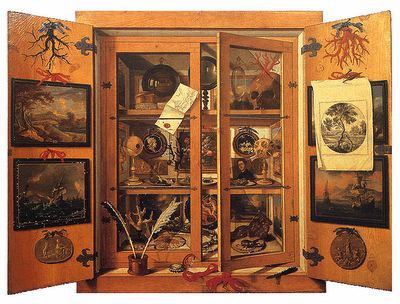

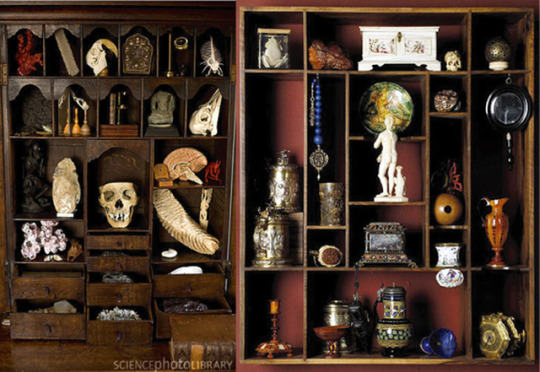



CABINET OF CURIOSITY (WUNDERKAMMERN)
Wunderkammern first began to appear in the homes of royalty and the aristocratic in 16th century Europe. They were soon dubbed “wunderkammern,” or, “wonders or miracles of the world,” and were intended to summarize the world to the very corners of the Earth. Another name for such collections was “vernunfft-kammer,” or, “room of reason.” Guides and manuals instructing collectors on proper preservation and display techniques began to appear in the second half of the 16th century. Samuel Van Quiccheberg, a Flemish doctor and curator for the ducal art collection in Munich, published the first known manual in 1565. His book, entitled “Inscriptiones vel tituli theatri amplissimi” defined the ideal wunderkammer as having five main sections. According to Quiccheberg, a complete collection consisted of objects dealing with genealogy, handicrafts dating from the antiquity to the present, natural specimens, technical and cultural objects, and a gallery that included paintings, drawings, and engravings. Finally, Quiccheberg stressed the importance of a collection acting also as a library, workshop and apothecary. Collecting was seen as beneficial in both an intellectual and a social sense; these repositories of knowledge both answered questions and piqued scientific curiosity. Additionally, showing one’s own cabinet was an excellent display of wealth and social prestige. The most impressive collections attracted visitors from all over Europe, which occasionally included royalty.
0 notes
Video
youtube
SUSAN PHILIPZ
War Damaged Musical Instruments features fourteen recordings of British and German brass and wind instruments damaged in conflicts over the last 200 years. The notes recorded are based on the tones of the military bugle call ‘The Last Post’, but the tune is fragmented to such an extent that it is almost unrecognisable. The tune signalled to lost and wounded soldiers that it was safe to return to base and is used today as a final farewell in military funerals and Remembrance ceremonies. The artist has worked with the architecture of the space devising a sequence of sounds that travel the length of the Duveen galleries. Philipsz explains, I am less interested in creating music than to see what sounds these instruments are still capable of, even if that sound is just the breath of the player as he or she exhales through the battered instrument. All the recordings have a strong human presence.
0 notes
Link
0 notes
Video
vimeo
MARGUERITE HUMEAU, CLEOPATRA
https://www.nowness.com/story/cleopatra-that-goddess
https://youtu.be/FZWSvQrJxNg
0 notes
Link
Kim compiled a selection of film clips that resonate with the concept of the voice, and invited four deaf friends to provide sound captions of what they feel could be added to the films. For non-hearing audiences, in much the same way that spoken conversation is mediated by sign language interpreters, the experience of watching a film is largely dependent on the way in which it is captioned. The multidimensionality of sound, or many layered sounds, are often reduced to brief captions. The captioner chooses which sounds to reference and which to leave out. In Close Readings, the sound captions range from literal to conceptual, imagined or even poetic.
0 notes